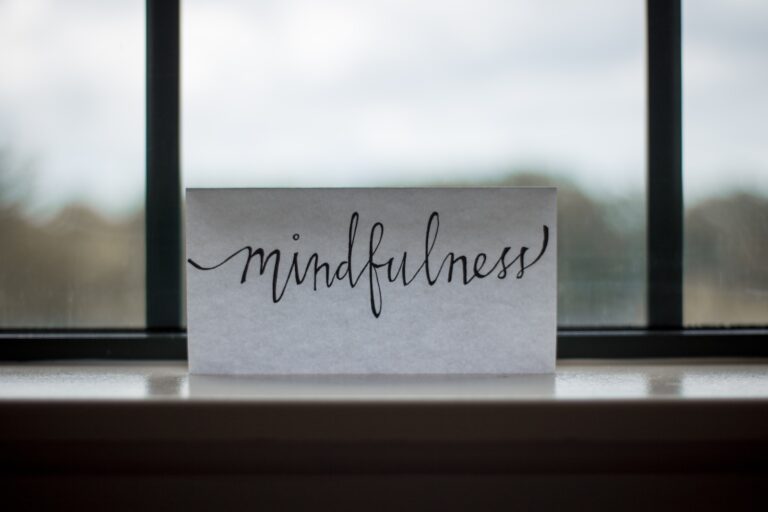Mastering Peaceful Communication: Your Guide To Harmonious Connections
You want to have harmonious connections with those around you, but sometimes it feels like conflict is inevitable. It’s easy to get frustrated when communication breaks down and arguments ensue.
But what if I told you that mastering peaceful communication is possible? That by learning the art of listening and expressing yourself constructively, you can transform your relationships into ones filled with understanding, empathy, and respect.
It may sound like an exaggeration, but mastering peaceful communication truly has the power to change your life. By developing this skillset, you’ll be able to navigate even the most challenging conversations with grace and ease. You’ll learn how to manage conflict in a way that doesn’t leave anyone feeling hurt or unheard.
And perhaps most importantly, you’ll be able to deepen your connections with others on a level that goes beyond surface-level interactions. So let’s dive in and explore the world of peaceful communication together – trust me when I say that it’s worth the effort!
Table of Contents
Understanding the Importance of Peaceful Communication
@ Midjourney AI Image Prompt: /imagine prompt:Create an image of two people having a conversation, with one person actively listening and the other person speaking calmly. Show body language that conveys understanding and respect. The background should be serene and peaceful. –v 5 –ar 3:2 (Note: Use –v 4 if you do not have a paid Midjourney account)
You might not realize it, but comprehending the significance of speaking calmly and respectfully can completely change your relationships with others. The power of empathy can’t be overstated.
When you take the time to understand someone else’s perspective, you create a safe space for them to express themselves without fear of judgment or rejection.
Cultivating patience is essential when it comes to peaceful communication. It can be frustrating when someone doesn’t immediately see things from your point of view, but taking a step back and allowing them to express themselves fully can lead to a deeper understanding and connection between the two of you.
This brings us to active listening, which is crucial in any conversation where we want to build harmonious connections with others.
Active Listening
@ Midjourney AI Image Prompt: /imagine prompt:Create an image of two people sitting facing each other, both with relaxed body language. One person is speaking while the other is leaning in and listening attentively, with a calm expression on their face. The setting is a peaceful and natural environment. –v 5 –ar 3:2 (Note: Use –v 4 if you do not have a paid Midjourney account)
Get in tune with the speaker’s wavelength and absorb their words like a sponge, allowing the message to paint a vivid picture in your mind. Effective listening skills are crucial for peaceful communication.
It involves more than just hearing what the other person is saying; it means being fully present and attentive to the speaker’s emotions, tone of voice, and body language. Overcoming distractions can be challenging, but it’s vital to give your full attention to the speaker.
Try to eliminate any external noise or interruptions that may hinder your concentration. Avoid thinking about what you’re going to say next while they’re still talking as this will only cause you to miss important points and misunderstand their message. Remember that active listening requires patience and empathy towards others’ thoughts and feelings.
By mastering this skill, you’ll create a safe space for open communication where everyone feels heard and valued. Listening attentively lays the foundation for expressing emotions constructively in conversations without causing harm or conflict unintentionally.
You can learn how to communicate effectively by practicing active listening skills consistently.
Expressing Emotions in a Constructive Way
@ Midjourney AI Image Prompt: /imagine prompt:Create an image of two individuals having a conversation, with one person expressing their emotions in a calm and constructive manner, while the other person listens attentively and responds with empathy. The setting should be peaceful and reflective. –v 5 –ar 3:2 (Note: Use –v 4 if you do not have a paid Midjourney account)
When it comes to expressing your emotions in a constructive way, it’s important to remember a few key points.
First and foremost, use ‘I’ statements instead of placing blame on others. This allows you to take responsibility for your own emotions and avoid escalating the situation.
Additionally, avoid criticism and focus on finding solutions together with the other person.
By keeping these tips in mind, you can have more productive and peaceful communication with those around you.
Use “I” Statements
Expressing your own feelings with ‘I’ statements can lead to more understanding and empathy in relationships. By taking ownership of your emotions, you’re able to communicate in a way that’s less likely to cause defensiveness or misunderstandings.
Here are some reasons why using ‘I’ statements can be effective:
1. It gives the other person an opportunity to see things from your perspective.
2. It takes responsibility for your own emotions, rather than blaming the other person.
3. It shows vulnerability, which can increase trust and intimacy in the relationship.
4. It sets a positive tone for communication by focusing on solutions rather than problems.
When communicating with others, it’s important to remember that empathy plays a key role in how we relate to one another. By using ‘I’ statements, you create space for both yourself and the other person to express their thoughts and feelings without fear of judgment or criticism.
In order to maintain this level of understanding and connection, it’s essential to avoid blame and criticism when discussing sensitive topics. Instead of attacking someone else’s character or actions, focus on how their behavior makes you feel and what you’d like them to do differently. This will help foster a sense of collaboration rather than conflict in your conversations.
Avoid Blame and Criticism
By avoiding blame and criticism in your conversations, you can create a safe and open space for understanding and collaboration with others.
When we blame or criticize someone, it often leads to defensiveness and shuts down any chance of productive communication. Instead of attacking the other person, try focusing on how their actions made you feel. This promotes empathy and allows the other person to understand where you’re coming from without feeling attacked.
Preventing defensiveness is key when trying to communicate peacefully. It’s important to remember that we all have different perspectives and experiences that shape our behavior. By avoiding blame and criticism, we can acknowledge these differences while still working towards solutions that benefit everyone involved.
Speaking from a place of understanding rather than judgment opens up the possibility for creative problem-solving, which will be discussed further in the next section about focusing on solutions.
Focus on Solutions
In this section, we’ll learn how to shift our focus towards finding solutions that benefit everyone involved and promote productive communication. When faced with a conflict, it’s easy to fall into the trap of blaming others for the problem or criticizing their actions. However, this only perpetuates negative emotions and doesn’t lead to any real resolution.
Instead, try brainstorming solutions with a collaborative mindset. This means actively listening to each other’s perspectives and ideas without judgment or defensiveness.
To engage in collaborative problem solving effectively, keep these three things in mind: first, focus on common goals rather than individual agendas; secondly, be open-minded and willing to consider different viewpoints; finally, be creative when generating potential solutions. By coming up with new approaches that haven’t been tried before, you may find unexpected ways to solve the problem at hand.
Remember that finding solutions is a collective effort – not an individual one – so don’t hesitate to ask for help or input from others if needed.
Now that we know how to approach conflicts with a solution-oriented mindset, let’s explore some strategies for managing them when they arise.
Managing Conflict
@ Midjourney AI Image Prompt: /imagine prompt:Create an image of two people sitting face to face, each holding a white flag. Both have calm expressions as they work to resolve a conflict peacefully. The background is a serene nature scene. –v 5 –ar 3:2 (Note: Use –v 4 if you do not have a paid Midjourney account)
Dealing with conflict in a calm and effective manner can lead to healthier relationships. Conflict resolution isn’t about winning or losing, but rather finding a solution that works for everyone involved.
One way to manage conflict is through de-escalation techniques. These techniques include active listening and taking a pause when emotions run high.
Active listening involves giving the other person your full attention without interrupting or judging their perspective. This creates an environment where both parties feel heard and understood, which can help diffuse tension.
Taking a pause during an argument allows both parties to cool off and approach the situation with clarity instead of reacting impulsively.
By managing conflict in these ways, you can strengthen your relationships and avoid unnecessary drama.
Now, let’s move on to practicing peaceful communication in daily life by incorporating mindfulness into our interactions with others.
Practicing Peaceful Communication in Daily Life
@ Midjourney AI Image Prompt: /imagine prompt:Create an image of two people having a conversation while holding hands. One person is smiling while the other is nodding attentively. The background is filled with trees and a calming blue sky. –v 5 –ar 3:2 (Note: Use –v 4 if you do not have a paid Midjourney account)
Are you ready to learn how mindfulness can improve your daily interactions and create more positive outcomes in your relationships? Let’s dive into practical ways to incorporate mindfulness into our communication.
One way is through role-playing exercises, where you can practice responding mindfully to various scenarios. This gives you an opportunity to experiment with new communication techniques in a safe environment.
Another technique is to focus on the present moment during conversations. Instead of getting lost in your own thoughts or anticipating what the other person will say next, listen actively and respond thoughtfully. Pay attention to nonverbal cues, such as body language and tone of voice, as these can provide valuable insights into the other person’s feelings and intentions.
By practicing mindful communication techniques like these, you can build stronger connections with others and create more harmonious relationships in all areas of your life.
Frequently Asked Questions
Can peaceful communication be used in all types of relationships, including professional ones?
If you’re wondering whether peaceful communication is applicable in professional settings, the answer is a resounding yes. In fact, incorporating this approach can bring about numerous benefits for both employers and employees alike.
By fostering an environment of open communication and respectful dialogue, conflicts can be resolved more effectively and with less stress. Furthermore, successful examples of peaceful communication can be found in various types of relationships – from interpersonal to international ones.
For instance, leaders who prioritize collaboration over competition have been able to forge stronger alliances even in the most tense situations. By taking the time to understand others’ perspectives and needs, you’ll not only build better working relationships but also create a more harmonious workplace culture overall.
How can one handle a situation where the other person refuses to engage in peaceful communication?
Dealing with stubborn individuals who refuse to engage in peaceful communication can be a challenging experience. It requires the ability to navigate power imbalances and find ways to communicate effectively without escalating the situation.
One technique is to use euphemisms that help you maintain a calm and empathetic demeanor, which can ease tension and encourage cooperation. Even though it may be difficult, remember that everyone has their own perspective and reasons for behaving the way they do.
By acknowledging their feelings and needs while advocating for your own, you can create an environment of mutual respect and understanding that promotes harmonious connections.
Are there specific techniques or strategies for managing conflict in a peaceful way?
When it comes to managing conflict in a peaceful way, there are several techniques and strategies that can be helpful.
Two key skills to focus on are active listening and assertive communication. Active listening involves truly hearing the other person’s perspective without interrupting or judging them, which can help build empathy and understanding.
Assertive communication involves expressing your own needs and boundaries clearly and respectfully, without attacking or blaming the other person.
Other useful techniques for deescalating conflicts include taking breaks when emotions run high, using ‘I’ statements instead of ‘you’ statements, finding common ground, and reframing disagreements as opportunities for growth and learning.
By practicing these skills regularly, you can become more adept at navigating conflicts in a peaceful way that serves both yourself and others.
Can peaceful communication be used to address deep-seated issues or traumas in a relationship?
Healing through communication is a powerful tool that can be used to address deep-seated issues or traumas in a relationship. By building trust through peaceful communication, you can create a safe space where both parties feel comfortable sharing their thoughts and feelings.
This process requires vulnerability, empathy, and active listening skills. It may take time to get to the root of the issue, but with patience and dedication, peaceful communication can lead to significant breakthroughs.
Remember that everyone involved deserves compassion and understanding as you work towards healing together.
How can one maintain a peaceful communication style when faced with stress or high-pressure situations?
When you’re in a stressful or high-pressure situation, it can be easy to react impulsively and potentially harm your relationships with others. To maintain a peaceful communication style, it’s important to practice stress management techniques like mindfulness or deep breathing exercises.
Additionally, active listening is key to understanding the needs and concerns of those around you and responding in a thoughtful manner. Remember that everyone experiences stress differently, so approach each conversation with empathy and an open mind.
By prioritizing peace over conflict, you can create harmonious connections even in challenging circumstances.
Conclusion
You’ve made it to the end of this guide on mastering peaceful communication. Congratulations! You’re now equipped with the knowledge and skills to create harmonious connections in your life.
But here’s the ironic part – just because you know how to communicate peacefully doesn’t mean that everyone else around you does. In fact, you’ll likely encounter people who haven’t read this guide and have no idea what peaceful communication is all about.
So, it’s up to you to lead by example and show them how it’s done. Remember, every interaction is an opportunity for growth and improvement. By practicing peaceful communication in your daily life, you can make a positive impact on those around you and foster deeper connections with others.
Keep at it, stay patient, and keep spreading peace wherever you go!







